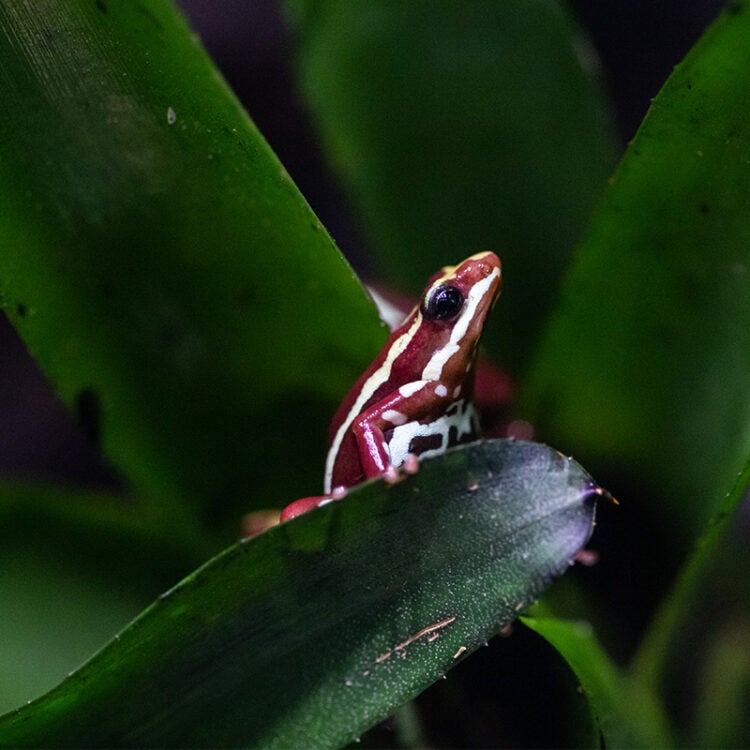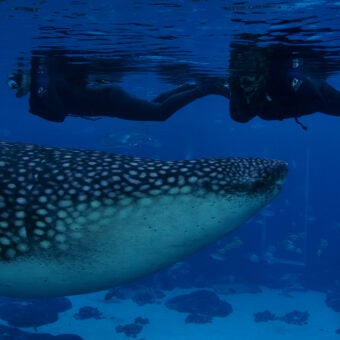-
Size
2 inches (5 cm) -
Diet
Insects and small invertebrates -
Range
Central America to Northern South America -
Habitat
Damp forest floor and low vegetation
Physical Characteristics
- Colors and color patterns vary by species, but all are brightly colored. Spot patterns on each individual are unique and may change as the animal matures.
- Sizes range from about 1.25-2 inches (3-5 cm).
- Glands on the skin produce toxins that deter predators. The toxicity is derived from insects that the frog eats and toxicity varies considerably from species to species.
Animal Fun Fact
Poison dart frogs’ colors and color patterns vary by species, but all are brightly colored. Spot patterns on each individual are unique and may change as the animal matures.
Diet / Feeding
- Diet consists of insects and other small rainforest invertebrates.
Range / Habitat
- This group of frogs occurs from Central America to Northern South America. Some species are restricted in their distribution to small areas within this region.
- The poison dart frog is found mostly in humid lowlands and in rainforest areas at elevations less than about 2,600 feet (793 m).
- They inhabit the damp forest floor and low vegetation except when the male carries tadpoles up into tree cavities.
Reproduction & Growth
- Mating occurs throughout the rainy season. The male actively courts the female with vocalizations and posturing. Once paired, she is attentive to him and will fight other females to maintain her exclusive access to him.
- Eggs are laid in the damp litter on the forest floor and the male guards them for 10-16 days until the tadpoles hatch.
- The male then carries one tadpole at a time on his back to a nearby water-filled feature such as a small seasonal pond, tree cavity, large cup-like leaf or a rock depression. The tadpole is attached to the male’s back by thick mucus secretions. The male deposits one tadpole in each location.
- The tadpole metamorphoses into a frog in 70-90 days. It reaches sexual maturity in 12-18 months. The adults can live 4-6 years in the wild and 10-12 years in a zoological environment.
Conservation Status
- “Least Concern” on the IUCN Red List.
- Appendix II of CITES.
Additional Information
- The adults of all species are diurnal (active during the day) and mostly remain on the ground.
Sources
- http://animaldiversity.ummz.umich.edu
- www.dendrobates.org/auratus.html







